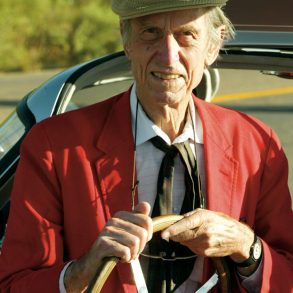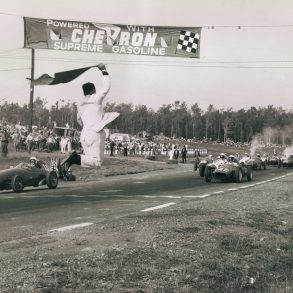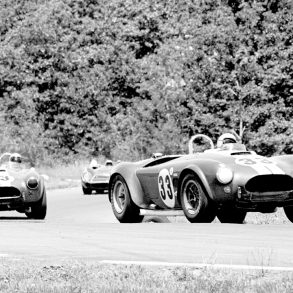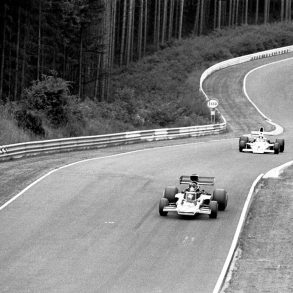As you’ll read in this month’s news, there is exciting news brewing on Long Island, as a strong movement is afoot to resurrect Bridgehampton Raceway. If you’re not familiar with the tale, it is one that has become all too familiar to race fans from Goodwood, England to Monterey, California. A track is constructed – essentially hacked out – in a remote rural area. Racers flock to the track, bringing notoriety and dollars. This influx of money and attention contributes to the local economy, which in turn makes the area more appealing to developers. Gradually, homes sprout up closer and closer to the track and, over time, the people who purchased those homes start to complain more and more about the noise, traffic, etc. As a result, such onerous restrictions are placed on the track that it becomes financially impossible to survive, at which time, the developers reappear and build homes or a shopping mall or, in Bridgehampton’s case, a golf course which only demi-billionaires can afford to join.
Now what is particularly intriguing in Bridgehampton’s case is that the town has had a change of heart. The golf course initially sounded like a great idea to most locals, what with open green space and lots of peace and quiet. But then the bulldozers and earthmovers came into town – day after day, week after week. Then several studies were concluded indicating that the golf course’s extensive use of fertilizers and pesticides would likely begin to contaminate the natural aquifer that the local community relies on for its drinking water. Hey, wait a minute!
As a result, the political pendulum has shifted with a new movement sprouting up to halt further construction of the uncompleted golf course and have the land return to its original use as open parkland and, you guessed it, a race course. As local civic activist Stacy Kaufman bluntly pointed out on local bumper stickers, “Noise pollution is transient – water pollution is forever.”

Now if you are not from Long Island, or even the East Coast, you may be saying to yourself that this is interesting and all, but it really isn’t any of your concern. However, I would suggest that you couldn’t be further from the truth. The protection – or rather now the resurrection – of Bridgehampton should be vitally important to anyone who has an interest in racing or racing history. Bridgehampton’s place in American motorsport history dates all the way back to a series of open road races held through the town of Bridgehampton in 1915. After World War II, Bridgehampton earned the distinction of being the first purpose-built road course in the nation. Think about the significance of that for a moment – Bridgehampton predates Lime Rock and every other road racing circuit in the United States – in essence, it is the cradle of post-war American road racing.
In the decades to follow, epic battles would be played out there between Ferraris and Cobras, McLarens and Lolas, Jaguars and Corvettes. Drivers like Phil Walters, Walt Hansgen, Briggs Cunningham, Mario Andretti, Mark Donohue, Dan Gurney and Phil Hill would all add chapters to their illustrious legacies at Bridgehampton. In fact, Bridgehampton had such a profound impact on the great drivers of the day that when Sir Stirling Moss first raced at Bridgehampton, he commented that it was “the most challenging course in the States.” And by many accounts, the prettiest.
Not only is the preservation of this site vitally important to the history of American motorsport, but the process of preserving this facility is also critical to the preservation of similar racing venues all around the country. Racetracks all over the United States are beginning to feel the effects of urban sprawl. Today, it might be Bridgehampton, but tomorrow it might be Road Atlanta or Laguna Seca or a track that you frequent on a regular basis.
Finally, on a more personal note, I began tracking this story a number of months ago, when I first heard rumors that the local legislators were having a change of heart. I was encouraged to contact Bob Akin, as this was a quest that he had invested quite a bit of his own time and money into. I spoke with Bob, who was enormously passionate about “saving the Bridge.” He told me that real change was afoot and that I should check back with him in the weeks that followed. Unfortunately, that follow-up call was never made possible as he was tragically killed at Road Atlanta the very next weekend.
There are numerous reasons why you should lend your support to the saving of Bridgehampton, not the least of which being as a fitting tribute to the legacy of Bob Akin, a Long Islander whose spirit and generosity embodied so much of what we love about our sport.










